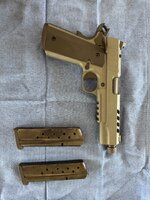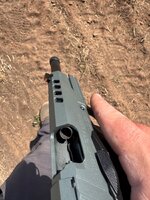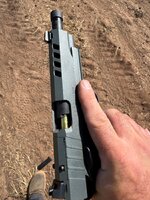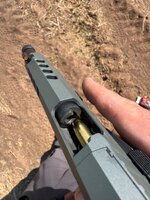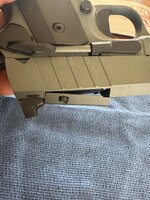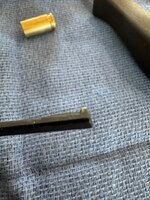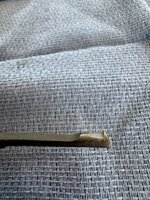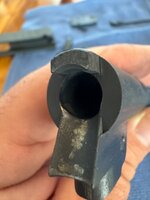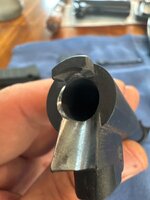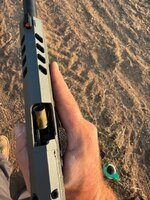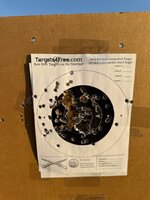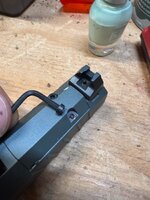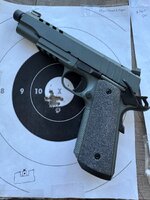RockAndSage
WKR
Thought this is worth a share - Rob (RCSchauland) is the pistol smith that built Springfield Professionals, Les Baers, and designed ACWs.
Truly one of if not THE most knowledgeable men on earth regarding this subject. His custom guns are 6-10k + 12 months.
Someone asked him what it takes to get a 9mm running and this is his response
Dude makes some cool guns, and I can respect that. And his reliability points are solid, though he'd be better off focusing on minimizing friction surface with fluting and surface texturing, and low-friction coatings, than just polishing - if reliability is his main focus.
But if I had to speak truth...frankly, he's about 20 years too late to the party. I literally saw nothing on his website that wasn't being done in the 1990s, and there was quite a bit being done back then that I also don't see on his guns.
Here's the thing - technology and engineering have moved far beyond the capabilities of hand-built 1911s and the tools available to one-man shops, making the custom smiths almost irrelevant to CCW and duty users. That's also why they're a dying breed.
Not talking about the semi-custom stuff coming out of places like Atlas, Nighthawk, etc, which is closer to "building" than "gunsmithing", once they figured out the engineering and precision-machining of each part. And while Staccato seems to be the first to have Glockified 1911s in terms of precision scaled-machining, engineering reliability insights, and cost-effectiveness - they won't be the only ones to figure it out. Competition will continue to go up as costs continue to go down.
And it's going to cause a near-extinction event for genuine, custom 1911 gunsmiths. Real ones, not builders. And that's sad. Eventually, the survivors will become some American analogue to the British bespoke-gunmaking industry, like Westley Richards or Holland & Holland. Because there won't be an ecological space left for them to survive in otherwise.
Hand-built 1911s are pretty much getting relegated to 3 categories, at this point: 1) they're becoming "art guns" and status symbols; 2) they're being made as paeans to the dying-out Fudds of yesteryear, who are often the heroes of these younger smiths or the guy commissioning the work; and 3) most rarely, there are some functional guns being built in high-performance calibers, to some unrealistic fantasy-spec the owner commissions them for (think, 9x23 Win, .40 Super, etc). Or, as "grail guns" that were the childhood fantasy of a middle-aged guy who now has money - buying what was considered cool back when he was in high school.
The car world saw something similar - the horsepower and performance that used to require savant-like motorhead genius is now simply bolt-on horsepower you can order off a website. EGW's 1911 parts lineup would have been almost impossible for even the best custom 1911 smiths to do, given the precision machining, heat-treating, metallurgy, and low-cost-through-scale that EGW just builds into their stuff, partially just as an artifact of their tooling. The stuff that Terry Tussey, Heine, Novak, Les Baer, and Bill Wilson would have been hard-pressed to accomplish in the 1970s, 80s, and even 90s is now, quite often, just relatively cheap plug-and-play parts installation.
There's nothing today's custom smiths are doing that's going to enhance reliability more than what you're already seeing Staccato do, or even what Dan Wesson did in its reliability engineering around the DWX line. Even Kimber, finally, seems to have nailed it as well with its 2K11 - a gun that would have been a $6000-$8000 minimum from a custom smith, with 6-12 months wait, is $1800, available in hundreds of local gun shops today, cash and carry out the door.
The world has changed and is moving on. I genuinely hope the younger custom smiths find a way to survive. One thing I'm certain of though - it won't be through improving the 1911 as a carry or duty gun, especially at carry or duty prices.

